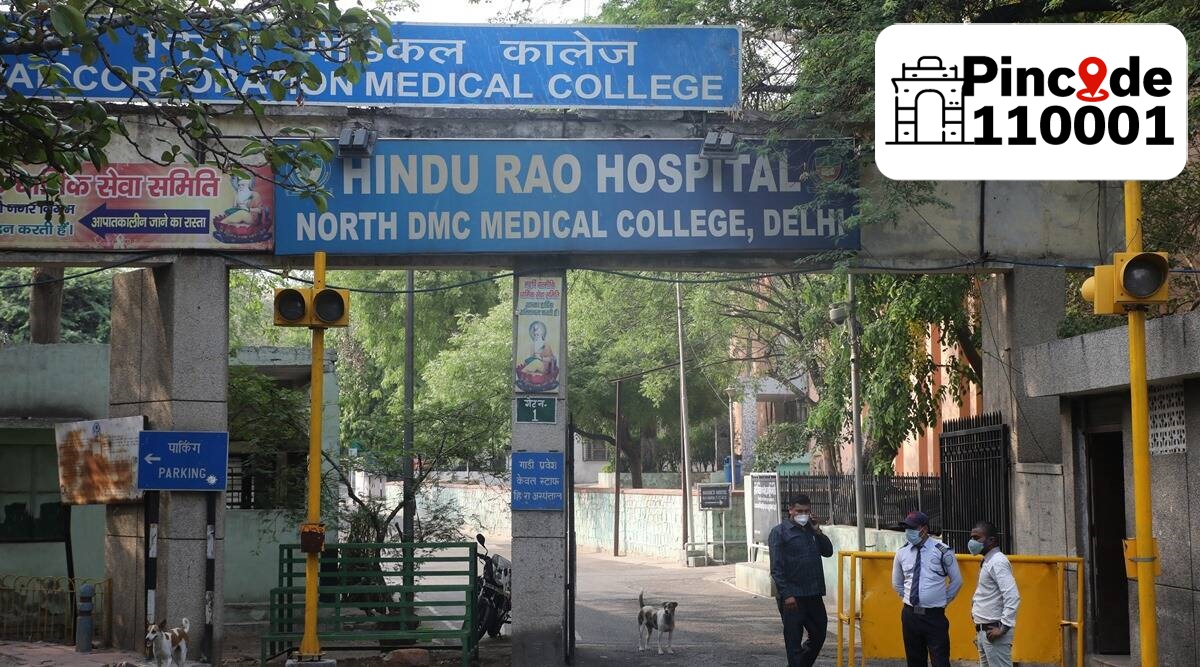 During the mutiny of 1857, Hindu Rao’s house became a strategic location for the British as it overlooked Old Delhi and was covered by a forest from three sides. (File Photo)
During the mutiny of 1857, Hindu Rao’s house became a strategic location for the British as it overlooked Old Delhi and was covered by a forest from three sides. (File Photo)Currently facing woes of cash crunch and dilapidated infrastructure, Delhi’s Hindu Rao hospital is part of the capital’s rich history – from the British era to the Tughlaq rule to a Maratha connection.
The hospital is placed on a small hilltop in Delhi’s Malkaganj, surrounded by Kamla Nehru Ridge from three sides. It is one of three ‘attractions’ on the hilltop, the other two being Pir Ghaib Hunting Lodge and Observatory and a Baoli.
During the rule of Firoz Shah Tughlaq, the hilltop was a forest area and a hunting zone for the dynast. During hunting outings, he would stay at the lodge nearby, formerly known as kushk-e-shikar, built between 1351-88.
The building was a double-storey structure with a hollow masonry cylinder and is also believed to have been used for astronomical purposes. Later, it took the name of Pir Ghaib, which literally means a vanished saint. The name was given to the building after stories of an Islamic saint vanishing into thin air started circulating.
Later, when the East India Company came to Delhi, civil servant William Fraser built a house at the hilltop. Fraser was a Scotsman, Persian scholar, agent to the Governor General in Delhi, and Commissioner of the Delhi Territory during the reign of the last Mughal Emperor, Bahadur Shah Zafar.
After his assassination in 1835, Raja Hindu Rao, a Maratha nobleman from Kolhapur, took over the house, which was eventually converted into a hospital. Hindu Rao was the brother-in-law of Maharaja Daulat Rao Scindia of Gwalior.
“Hindu Rao’s house was originally built by my wife’s (Olivia Fraser’s) ancestor William Fraser,” Dalrymple said.
During the mutiny of 1857, Hindu Rao’s house became a strategic location for the British as it overlooked Old Delhi and was covered by a forest from three sides.
In 1912, the British government decided to make three temporary hospitals, which included the conversion of Hindu Rao’s house into a hospital for the European community. A mansion called Balak Ram Ki Kothi was converted into a hospital for Indians. The government also passed directions to build an infectious disease hospital at the same time.
According to Delhi Archives records, the British government on October 2, 1912, passed an order through which it decided to convert the two structures into hospitals. Prior to this, Hindu Rao’s house was being used by the military authorities as a small nursing home.
“Hindu Rao’s house should be taken over from the military authorities for the purpose of a European Hospital. The house known as Balak Ram Ka Kothi, which has been acquired, should be converted into an Indian Hospital and a small infectious disease block should be built on a site to the north of Kingsway Station between Malakpur and Dhaka,” said the order passed by the then Secretary to the government of India, H Wheeler.
As per the preliminary estimates, a sum of Rs 45,736 was decided to plaster and paint the wards.
Interestingly, the British government did not install fans in the hospital, initially stating that since the government will not be in Delhi in summers, fans will not be required, which helped them save a sum of Rs 2,900.
Three nurses were lent from Walker Hospital, Shimla from December 1, 1912 to March 31, 1913. Post Independence, the hospital came under central government and later the Delhi government.
“In 1951, Delhi State Govt. converted this Nursing Home into a General hospital offering basic preventive and curative OPD services with 127 beds for in-patients. The Municipal Corporation of Delhi took over the hospital in 1958 and the Ministry of Health, Govt. of India, designated this hospital as a referral hospital in 1963,” states the hospital’s website.
According to Dr SK Seth, former Director of Hospital Administration in North MCD, the hospital was known for its major dog bites clinic and as a provider of anti-rabies serum.
“Emergency block, OPD, and college of nursing were added later. Nowadays, due to scarcity of funds, they are unable to keep pace with it. However, the hospital has been providing services to people of North India, including Haryana, Uttar Pradesh and Rajasthan,” Dr Seth said.